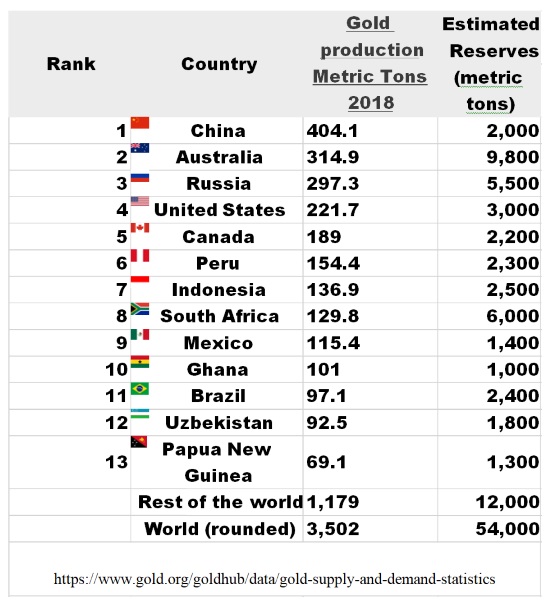Johnny Hart, the creator of the comic strip BC, created an economy in which clams served as currency. Clams were plentiful, so no one ran out of currency, except that an occasional clam had cartoon legs and opted for a different career. A currency in the form of a good is of course nothing new in the history of world economies, but one good – gold – seems to have legs that have endured the test of time, or so we are led to believe. The argument is that a gold-backed currency provides a stable store of value and discipline when compared to fiat currencies.
Such a currency requires a government standing ready to convert the currency into gold at a fixed price – the government cannot increase the supply of money without having enough gold to meet its redemption obligations. A similar argument lies behind cryptocurrencies like Bitcoin, whose production, like that of gold, is dependent upon mining – in the case of Bitcoin through the use of computers to solve a mathematical problem. In both cases, real resources, combined with a limit on the outstanding quantity of those resources, natural or otherwise, are needed to increase the amount of gold or Bitcoins outstanding. They do not depend on reliance upon governments to responsibly manage the supply of fiat money.
The stability arguments for such arrangements, however, are not borne out by history, especially when we look at the events surrounding the Great Depression, where adherence to the gold standard led to a collapse of the US money supply and a worldwide economic slump. Because of Europe’s need to finance World War I, it incurred substantial deficits to the US in purchasing war-related goods. Gold flowed into the US; and to offset the increase in the money supply that the inflows implied, the Federal Reserve sold bonds in an attempt to sterilize the inflationary pressures. When the Great Depression hit, the inflows of gold required the Fed to contract the money supply instead of expanding it to stimulate the economy. Friedman and Schwartz claim that the money supply declined by one-third, exacerbating the economic decline.
As another example, the price of gold at the end of 2000 was $272.65 per oz., as compared to $1392.35 as of July 9, 2019, which represents an implied compound rate of inflation of about 9% per year, as compared with the average change in the CPI of 2.1% per year over that period. At a rate of increase of 9% per year, it would take only about eight years for the price level to double. Hardly an endorsement for the stability of gold as a benchmark to which to tie our currency.
While some push the benefits of the gold standard, it may be worthwhile to take a look at some key questions before we opt to potentially turn over a key component of our monetary base to outsiders. Since a return to a gold standard would tend to benefit those who have the gold, it is fair to ask who owns the existing gold stock, where known deposits of gold are yet in the ground, who stands to gain the most from mining their existing stocks, and how long mining might continue until the known stocks are exhausted.
In terms of ownership of the existing gold stock, EU governments and central banks are the largest holders of gold, with about 9,817 metric tons, worth about $445 billion at current prices, an amount that represents about 32% of all government and central bank holdings of gold. The US is second with 8,122 metric tons, worth about $369 billion, which is about 26% of the world total. Interestingly, the IMF is in third place with 2,814 metric tons, worth about $128 billion, or 9% of the world total. China and Russia follow, each holding about 6% of the total.
But world holdings of gold are only part of the picture. Going forward, it is important to know who the key producers are and where the known reserves are located. The biggest mines in order of size are in Indonesia (Grasberg mine), South Africa (South Deep mine), Papua New Guinea (Lihir mine), Russia (Olimpiada mine), Dominican Republic (Pueblo Viejo mine), and Australia (Boddington mine). The following table shows the countries that are the key producers of gold and what their estimated in-ground reserves are.
Not all the gold produced goes into currency reserves. In fact, typically only 25% of annual production goes into gold bars and currency, while another 5% is absorbed by central banks. Jewelry accounts for about 52% of production, with the only other significant use being in the manufacture of certain electronics.
In terms of US production, our 221 metric tons per year would be valued at about $10.9 billion per year. To put that number in context, between 2017 and 2018 the Fed had to increase its balance sheet by about $100 billion, just to accommodate the increase in currency demand. That’s an amount about nine times the value of the gold reserves available to be mined in the US. This means that were the US currency to be backed by gold, the Fed would have to purchase about two-thirds of the world’s production annually at current output levels. Furthermore, if only the US were to go on the gold standard, this move would create a windfall for those countries with large gold reserves and would also put the US money supply at the mercy of Russia, China, and a few other countries who are not our strongest allies at the moment.
Finally, given that world’s economies are continuing to grow, the demand for whatever commodity was used to back government money supplies would also need to grow at pace. If currencies are backed by gold, supply would need to keep up with demand or the price would skyrocket. Provident Metals has reported that, based upon known supplies of gold in the ground and assuming that about 3,000 metric tons of gold are mined every year, it is likely that mining would become economically unsustainable by about 2050.
Given the limited supply of gold reserves, the lack of price stability, the fact that the large known in-ground reserves are located outside the US in some not-so-friendly countries, and the fact that over 52% of existing production is absorbed by jewelry demand, gold may be one commodity that is better used for decoration and jewelry than to support currencies and financial markets. What is equally clear is that we don’t want to base our money on clams located on someone else’s beach.
Bob
Robert Eisenbeis, Ph.D.
Vice Chairman & Chief Monetary Economist
Email | Bio
EDITOR'S NOTE: A follow up piece was written by Robert Eisenbeis, Ph.D. which includes replies to comments and questions submitted by you, our community and audience. Read it here: Clams Or Gold Responses
- [1] Some of us will remember that at one time the word clams was slang for dollars.
- [2] This is well-documented in A Monetary History of the United States, 1867–1960, by Milton Friedman and Anna Schwartz.
- [3] These amounts can vary quite a lot depending upon the gold price on the day the calculation is made.
- [4] https://www.statista.com/statistics/299609/gold-demand-by-industry-sector-share/
- [5] US gold production peaked in 1998 at about 310 metric tons and has declined steadily thereafter as reserves have been depleted.
- [6] https://www.providentmetals.com/knowledge-center/precious-metals-resources/global-gold-supply-predictions.html
Links to other websites or electronic media controlled or offered by Third-Parties (non-affiliates of Cumberland Advisors) are provided only as a reference and courtesy to our users. Cumberland Advisors has no control over such websites, does not recommend or endorse any opinions, ideas, products, information, or content of such sites, and makes no warranties as to the accuracy, completeness, reliability or suitability of their content. Cumberland Advisors hereby disclaims liability for any information, materials, products or services posted or offered at any of the Third-Party websites. The Third-Party may have a privacy and/or security policy different from that of Cumberland Advisors. Therefore, please refer to the specific privacy and security policies of the Third-Party when accessing their websites.
Sign up for our FREE Cumberland Market Commentaries
Cumberland Advisors Market Commentaries offer insights and analysis on upcoming, important economic issues that potentially impact global financial markets. Our team shares their thinking on global economic developments, market news and other factors that often influence investment opportunities and strategies.



